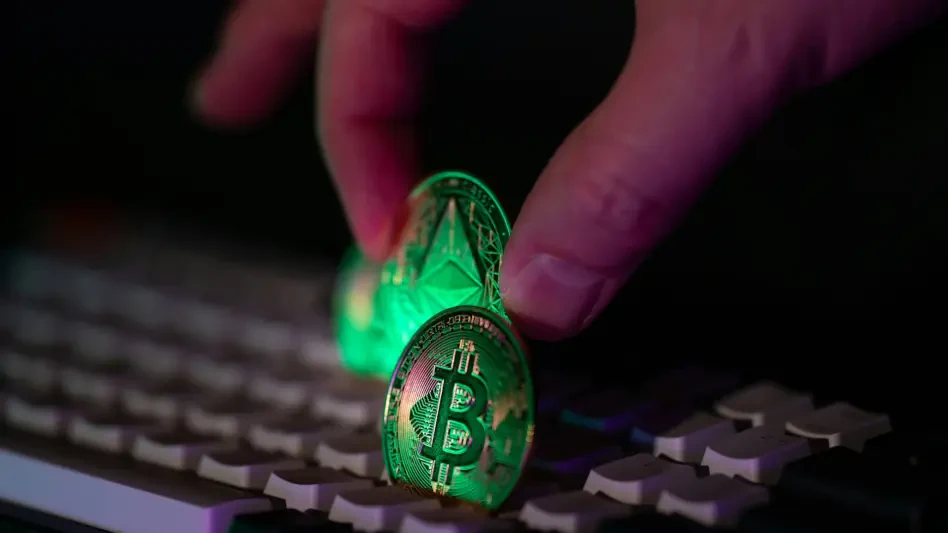Crypto fraud has surged dramatically this year, presenting an array of new challenges for the digital financial ecosystem. A combination of sophisticated blockchain scams and the misuse of deepfake technology has led to unprecedented increases in financial losses and compromised cybersecurity for crypto users worldwide. These advanced fraudulent methods have shaken trust in digital currency transactions, prompting experts to issue urgent warnings and recommendations for enhanced security measures.
The Rise of Blockchain-Based Scams
Elaborate Scam Networks and Techniques
In the first quarter of this year, GoPlus Security uncovered intricate scam networks specifically targeting unsuspecting crypto users with offers of effortless USDT earnings. These scammers employ multi-stage deceptions to build initial trust via small token transactions and minimal USDT incentives, deceiving victims into granting token approval permissions. This approval process, which typically involves externally owned accounts (EOAs), enables scammers to monitor wallets closely and deploy high-speed front-running bots to drain funds. Victims’ balances are swiftly emptied once they reach a certain threshold or when revocation activity is detected.
On major blockchain networks, scammers launch seemingly legitimate projects and entice users with zero-cost, stable USDT rewards for completing straightforward tasks. After establishing initial trust through micro-transactions, they persuade users to grant these approvals. Despite appearing safe, such permissions allow scammers to orchestrate wallet monitoring and quickly react to fund availability or attempted revocation. The elaborate nature of these scams underscores the need for heightened vigilance and scrutiny in transaction approvals, especially concerning EOAs.
Scammers’ Strategies and Preventive Measures
GoPlus Security has outlined strategies scammers use to exploit trusted digital platforms, revealing the depth of their deceptive tactics. By enticing users through claims of stable rewards and low-risk tasks, scammers set the stage for more insidious actions. Upon obtaining token approval permissions, they use sophisticated bots programmed to rapidly extract funds from victims’ wallets. This strategy, marked by high speed and stealthiness, reflects the advanced technology and ingenuity of modern-day scammers.
To defend against these threats, GoPlus Security advises users against granting unlimited token approvals and emphasizes the importance of adopting proactive on-chain security tools. These tools help limit or revoke dormant permissions, reducing the chances of wallet compromise. Further alignment comes from on-chain investigator ZachXBT, who underscores the necessity of verifying token contracts and approval histories. Users are encouraged to take a robust approach to security by employing verification tools and maintaining cautious practices when interacting with unrecognized digital entities.
Deepfake Technology in Crypto Scams
Impact of AI-Generated Deepfakes
The misuse of deepfake technology has added a new dimension to crypto fraud, with AI creating convincing fake videos of prominent industry figures to promote fraudulent investment platforms. Scammers leverage this technology to create realistic impersonations, such as those of Binance co-founder Changpeng Zhao (CZ) and Ghana’s Ashesi University President Patrick Awuah Jr. These deepfake videos, designed to exploit the credibility of well-known personalities, are particularly effective in misleading victims.
According to McAfee, the average American encounters approximately three deepfake videos daily, illustrating the significant scale of this technology’s use in scams. The sheer volume and persuasiveness of these AI-generated videos demonstrate a dangerous escalation, with scammers developing increasingly realistic and convincing fraudulent content. This trend highlights the necessity for users to exercise a critical eye and verify the authenticity of digital media representations.
Identifying and Mitigating Deepfake Threats
To combat the rising threat of deepfake-enhanced scams, McAfee advises users to be aware of several key red flags. These include offers that seem too good to be true, fake celebrity endorsements, non-existent exchanges or wallets, urgency tactics, and demands for private keys or upfront payments. The proliferation of deepfake-assisted fraud, which led to over $200 million in losses in the first quarter of this year alone, underscores the rapid scaling of scams facilitated by generative AI and synthetic media.
The digital financial community must embrace comprehensive strategies to identify and mitigate the influence of these advanced fraudulent techniques. Vigilance and critical evaluation are paramount, with users urged to consider the credibility and verification processes for any digital representations. By adopting thorough verification practices, crypto users can safeguard against the pervasive threat of deepfake scams.
The Need for Vigilance and Enhanced Security
Community Response to Evolving Threats
In light of the dual-threat environment posed by sophisticated blockchain scams and persuasive AI deepfakes, the crypto community is facing an unprecedented challenge. The detailed analysis of these fraudulent activities reveals a sobering view of the current state of crypto fraud, emphasizing the importance of heightened vigilance and comprehensive security measures. The ability to recognize and respond to these evolving threats is crucial for safeguarding financial assets and maintaining trust in digital transactions.
Security experts continue to advocate for robust defensive measures, highlighting the importance of adopting on-chain security tools and verifying token contracts and approval histories. The integration of proactive security tools can significantly reduce the risk of wallet compromises, while maintaining cautious interaction practices with external accounts and digital platforms.
Future Considerations and Solutions
This year has seen a dramatic rise in crypto fraud, posing a host of new challenges to the digital financial ecosystem. The combination of sophisticated blockchain scams and the misuse of deepfake technology has led to unprecedented increases in financial losses and compromised cybersecurity for crypto users around the globe. These advanced fraudulent activities have significantly shaken trust in digital currency transactions, causing a ripple effect throughout the industry. As a result, experts are issuing urgent warnings and calling for enhanced security measures to protect users. The digital financial landscape, once considered revolutionary and secure, now faces a critical moment as it grapples with these emerging threats. Increased vigilance and innovation in security practices are crucial to restoring user confidence and ensuring the sustainability of cryptocurrency as a reliable financial platform. Addressing these challenges head-on is essential to safeguarding the future of digital transactions and maintaining the integrity of blockchain technologies.








